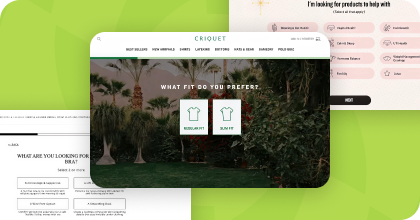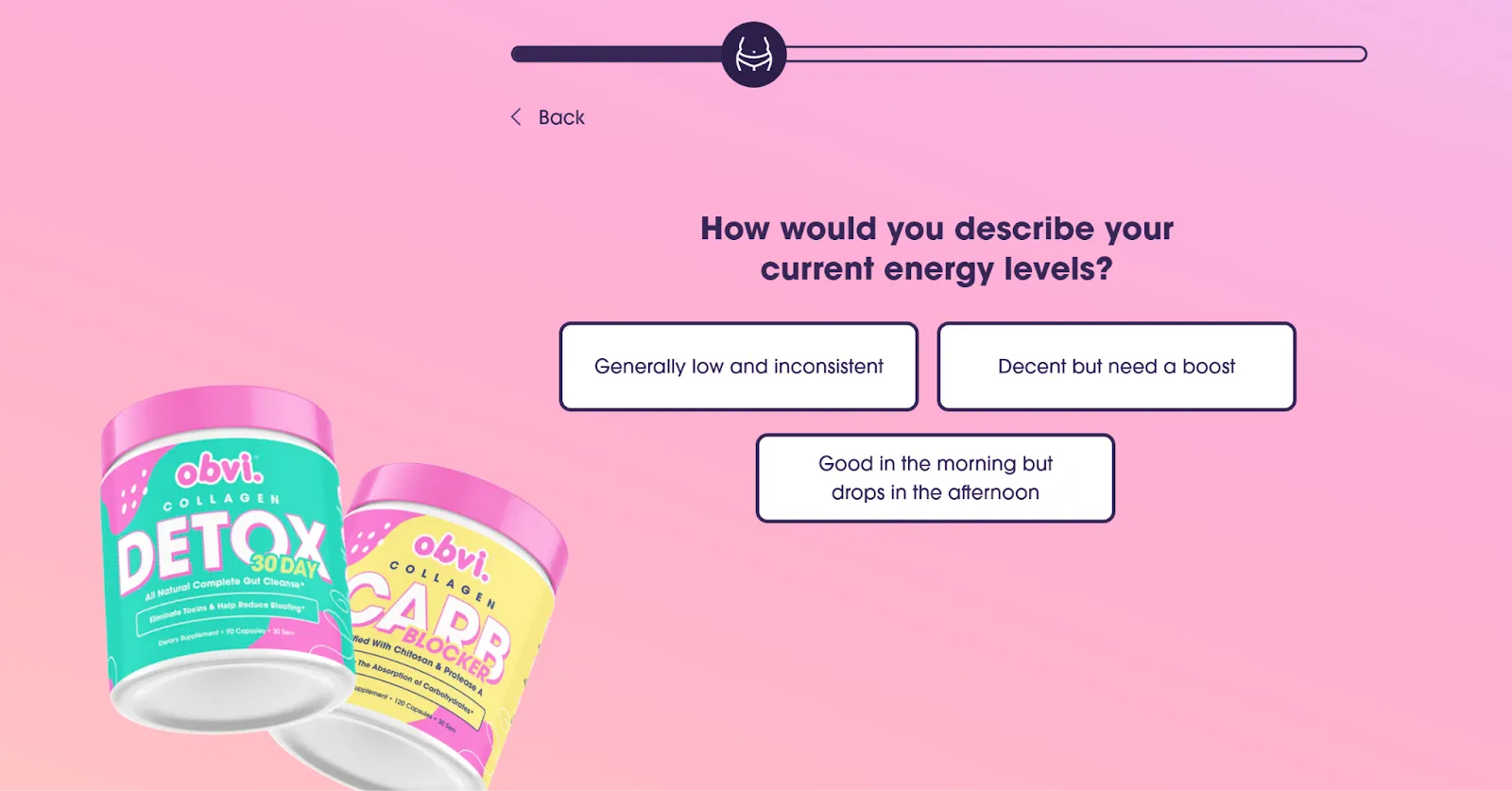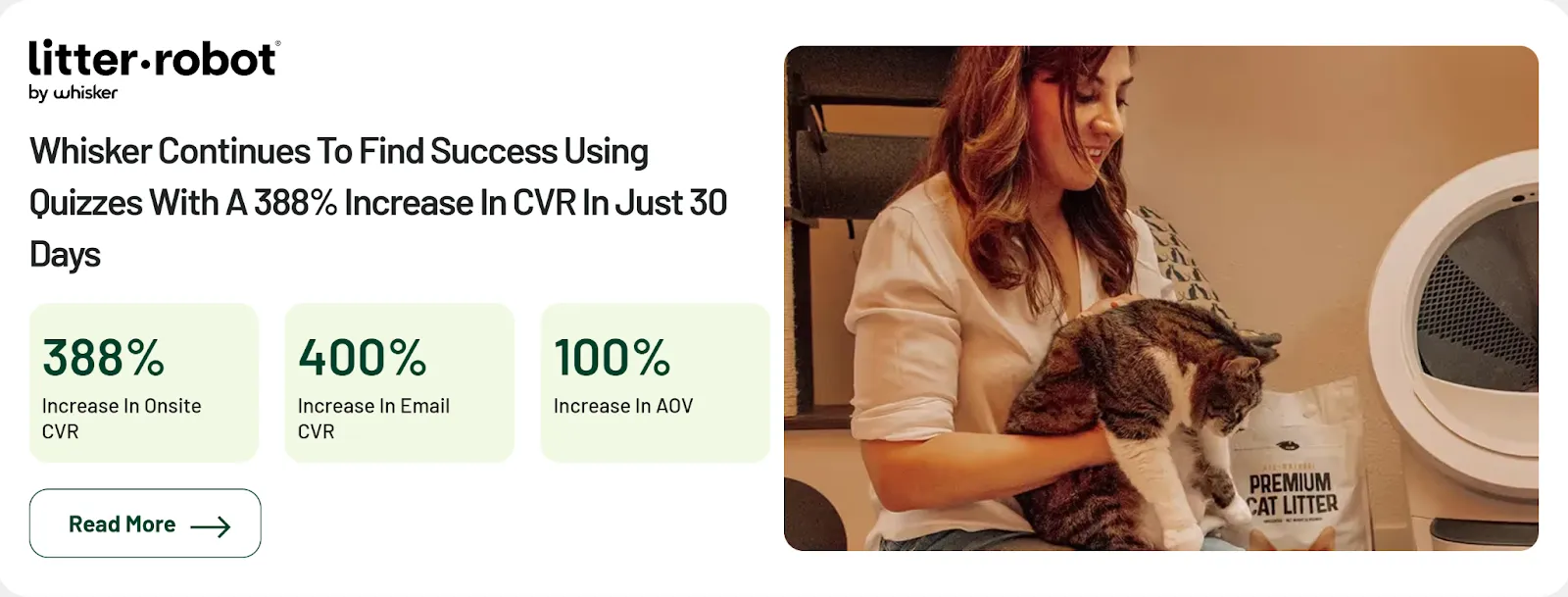March 5, 2025
Zero-party data allows brands to deliver the personalized experiences that customers expect. Here's how to collect it and put it to use.


Steal High-Converting Ideas From Leading DTC Brands
Browse 50+ real examples of personalized marketing funnels you can replicate today.
Personalization drives sales, but traditional personalization methods only tell part of the story. Zero-party data—information customers willingly share about their preferences and needs—creates a direct line to what shoppers actually want, eliminating guesswork and dramatically improving results.
Brands today face a dilemma: they need personalization to compete, yet struggle with data privacy restrictions and consumer distrust of data collection practices. Zero-party data solves this fundamental challenge by providing the rich, accurate consumer insights needed for personalization at scale—all while respecting privacy boundaries. It's the key to maintaining engagement throughout the marketing funnel, reducing unsubscribe rates, and ensuring customers feel heard and understood in all future communications and experiences.
The most successful DTC brands already use interactive quizzes, preference centers, and strategic forms to collect this valuable data. Brands like Obvi, CrazyBulk, and Andie Swim have grown their businesses with this approach—achieving conversion rate increases of up to 296% and ROIs as high as 96X.
This guide explains how to capture zero-party data and turn those insights into personalized experiences that drive remarkable business outcomes.

Zero-party data is information customers intentionally and proactively share with your brand. Unlike other data types, it’s information customers know you’ll use to improve their experience.
Forrester Research, who coined the term, defines zero-party data as “data that a customer intentionally and proactively shares with a brand, which can include preference center data, purchase intentions, personal context and how the individual wants the brand to recognize them.”
Let’s compare zero-party data to other data types:
The benefits of prioritizing zero-party data include:
The marketing landscape is undergoing a major shift driven by two big forces: consumer demand for privacy and regulatory changes.
Consumers are more privacy-conscious than ever while expecting personalization from brands. This is what industry experts call the “personalization paradox” – customers want personalized experiences but are unwilling to be tracked.
This is exactly why brands like Obvi switched from Octane AI to Digioh’s quiz solution and saw an 80% quiz completion rate (compared to 45% with their previous provider). They prove that customers will share information when they get value in return.

Google’s planned deprecation of third-party cookies in Chrome marks the end of an era for digital marketing. While delayed several times, this change is coming and will fundamentally change how we collect customer data.
Digioh customers who have implemented zero-party data strategies are seeing amazing results:
By embracing zero-party data now, ecommerce businesses can build a sustainable competitive advantage and stronger customer relationships like these Digioh customers.
Gathering zero-party data requires creating value exchanges that make customers willing – even eager – to share information. Here are four proven ways:
Use product recommendation quizzes to guide customers while collecting preference data.

The key is to make quizzes feel like a service not a data collection tool. Focus on helping customers solve problems or find products they’ll love.
Implementation tips:
Let customers control content preferences, product interests, and communication frequency.
By giving customers control over their experience, you’re showing respect for their time and collecting valuable targeting data.
Implementation tips:
Capture key customer data through pop-ups triggered at intent-driven moments.
Bonafide, a women’s health company, does this well. Using Digioh’s interactive forms, they increased their onsite conversion rate to 14.8%—a 469% increase. By focusing on creating value for customers through personalized recommendations, they now generate 6.64% of their total online revenue through these zero-party data collection methods.
Implementation tips:
Zero-party data collection should be continuously optimized through testing:
What works for one brand or customer segment may not work for another. Testing helps you find what works for your unique audience.
A zero-party data strategy requires the right technology stack. Digioh provides a comprehensive solution for ecommerce merchants looking to collect and activate customer-provided data.
Digioh’s platform includes:
The platform is designed to make zero-party data activation instant, no technical hurdles between collection and activation.
Leading brands across industries are using zero-party data to create customer experiences that stand out:
RANAVAT, a luxury skincare brand, flipped their approach to personalization with Digioh and saw a 294% increase in conversions. Their quizzes collected information about customers' skin types, concerns and goals which powered personalized email programs that delivered tailored recommendations. This not only increased conversions but also generated 3,000 new email subscribers and 16% of their total online revenue.

Whisker, maker of the Litter-Robot, is still seeing success with quizzes as part of their zero-party data strategy. By replacing category browsing with guided selling quizzes they saw a 388% increase in onsite conversions in 30 days. Their quiz collected information about pet owners' specific needs and preferences and created a fully personalized shopping experience. They also saw a 400% increase in email conversions and doubled average order value.

Peak Wellness USA saw 37X ROI with Digioh’s interactive guided selling quiz. By collecting zero-party data about customer preferences, health goals and lifestyle factors they were able to create offers that resonated with customers on a personal level. This resulted in a 300% increase in conversions as customers received product recommendations tailored to their needs not generic suggestions.

Collecting zero-party data is just the beginning. The real value is in activation—turning those insights into personalized experiences across the customer journey.
Zero-party data allows segmentation based on stated preferences not assumed interests:* Create segments based on product interests
This way you can send messages that speak to customer’s needs, not assumptions.
Modern marketing platforms can dynamically change content based on zero-party data:
The most advanced implementations combine zero-party data with real-time behavior for in-the-moment personalization.
Customer support teams with zero-party data can assist better:
Pro tip: Learn how the Digioh x Gorgias integration makes this easy.
Zero-party data programs should be measured on both collection and downstream metrics:
Digioh customer Bedgear saw shoppers become 4.9x more likely to buy and overall conversion rates increased 490% after implementing zero-party data.
The shift to zero-party data is a fundamental improvement in how brands understand and serve their customers. Ecommerce merchants can build stronger relationships and better personalization by asking customers about their preferences rather than making assumptions.
To get started:
Ready to see what zero-party data can do for your personalization strategy? Request a demo to see how Digioh can help you implement the strategies discussed in this article and start building deeper, more profitable customer relationships through transparent data collection.
Zero consumption based pricing with zero limits allows your brand to deploy Digioh across your entire marketing funnel.
book a demo
